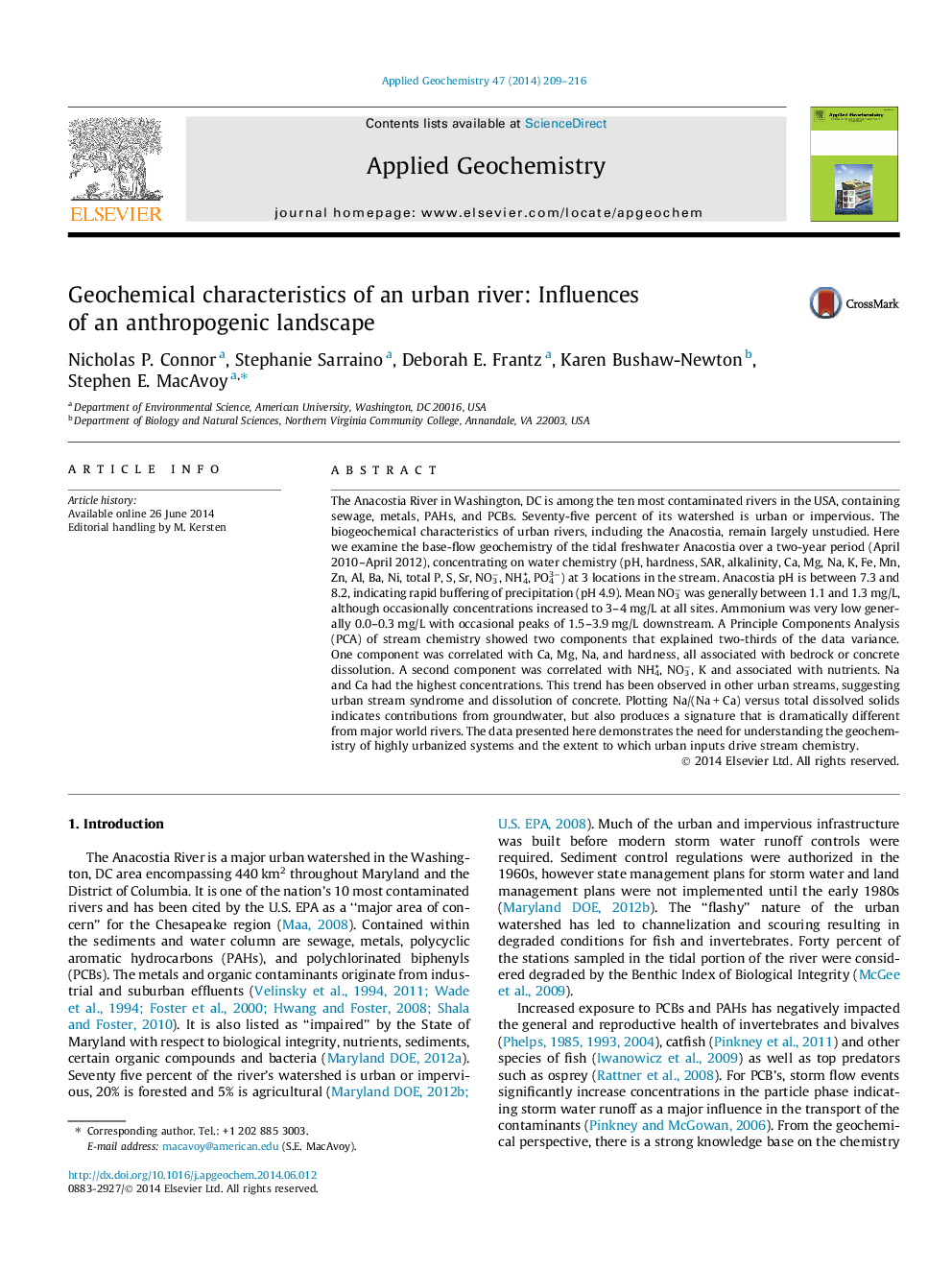| Article ID | Journal | Published Year | Pages | File Type |
|---|---|---|---|---|
| 4435753 | Applied Geochemistry | 2014 | 8 Pages |
•This paper examines the base-flow geochemistry of the tidal freshwater Anacostia River.•NO3 and NH4 were high for a “normal” river, but not as high as observed in eutrophic freshwater.•PCA showed an urban geochemical and a nutrient component explained >60% of the variance.•Ca, Mg, Na and pH show geochemistry indicative of urban stream syndrome.
The Anacostia River in Washington, DC is among the ten most contaminated rivers in the USA, containing sewage, metals, PAHs, and PCBs. Seventy-five percent of its watershed is urban or impervious. The biogeochemical characteristics of urban rivers, including the Anacostia, remain largely unstudied. Here we examine the base-flow geochemistry of the tidal freshwater Anacostia over a two-year period (April 2010–April 2012), concentrating on water chemistry (pH, hardness, SAR, alkalinity, Ca, Mg, Na, K, Fe, Mn, Zn, Al, Ba, Ni, total P, S, Sr, NO3−, NH4+, PO43−) at 3 locations in the stream. Anacostia pH is between 7.3 and 8.2, indicating rapid buffering of precipitation (pH 4.9). Mean NO3− was generally between 1.1 and 1.3 mg/L, although occasionally concentrations increased to 3–4 mg/L at all sites. Ammonium was very low generally 0.0–0.3 mg/L with occasional peaks of 1.5–3.9 mg/L downstream. A Principle Components Analysis (PCA) of stream chemistry showed two components that explained two-thirds of the data variance. One component was correlated with Ca, Mg, Na, and hardness, all associated with bedrock or concrete dissolution. A second component was correlated with NH4+, NO3−, K and associated with nutrients. Na and Ca had the highest concentrations. This trend has been observed in other urban streams, suggesting urban stream syndrome and dissolution of concrete. Plotting Na/(Na + Ca) versus total dissolved solids indicates contributions from groundwater, but also produces a signature that is dramatically different from major world rivers. The data presented here demonstrates the need for understanding the geochemistry of highly urbanized systems and the extent to which urban inputs drive stream chemistry.
